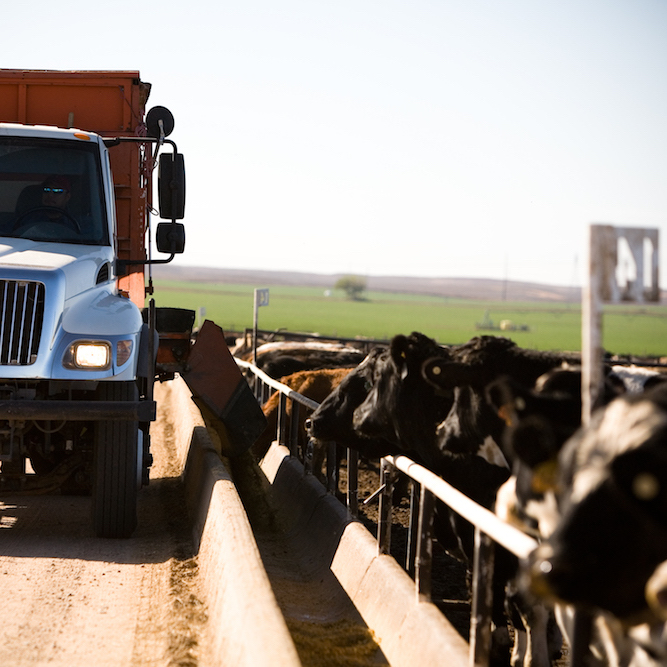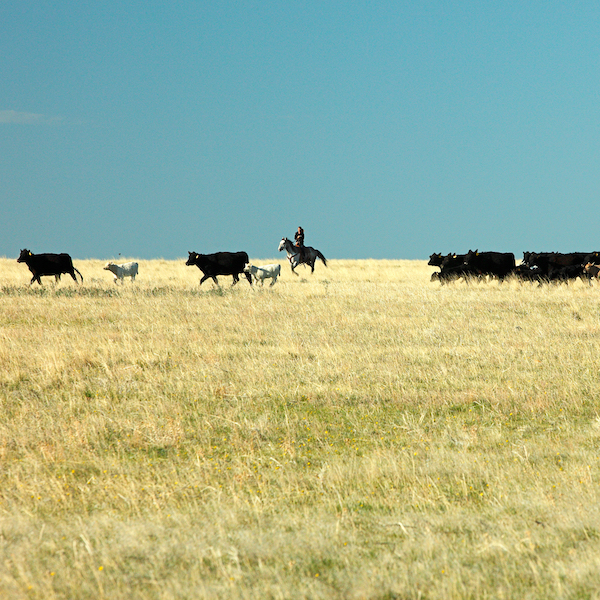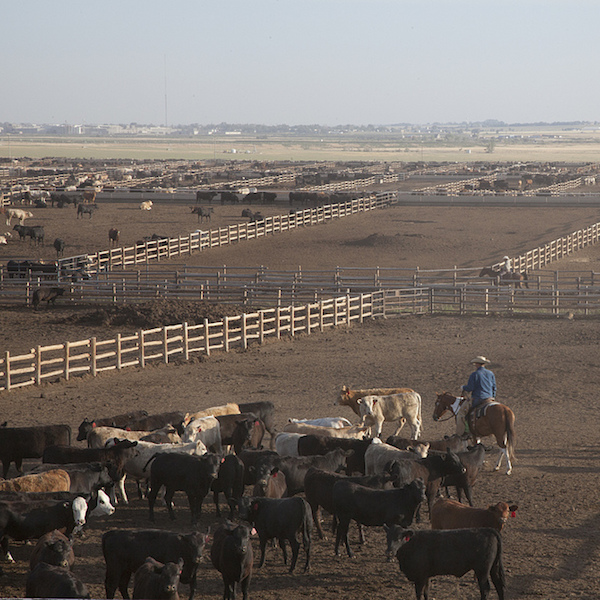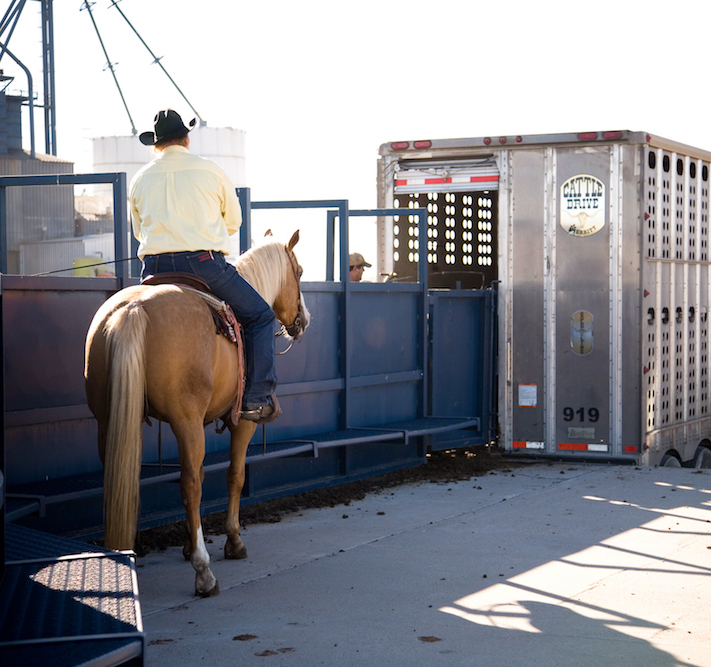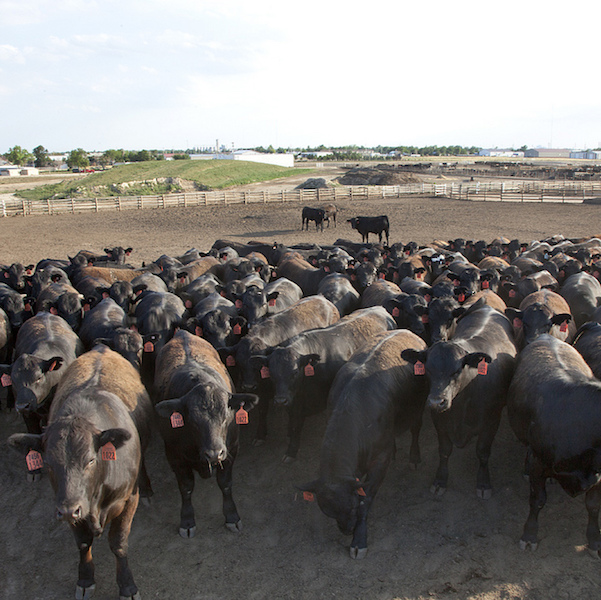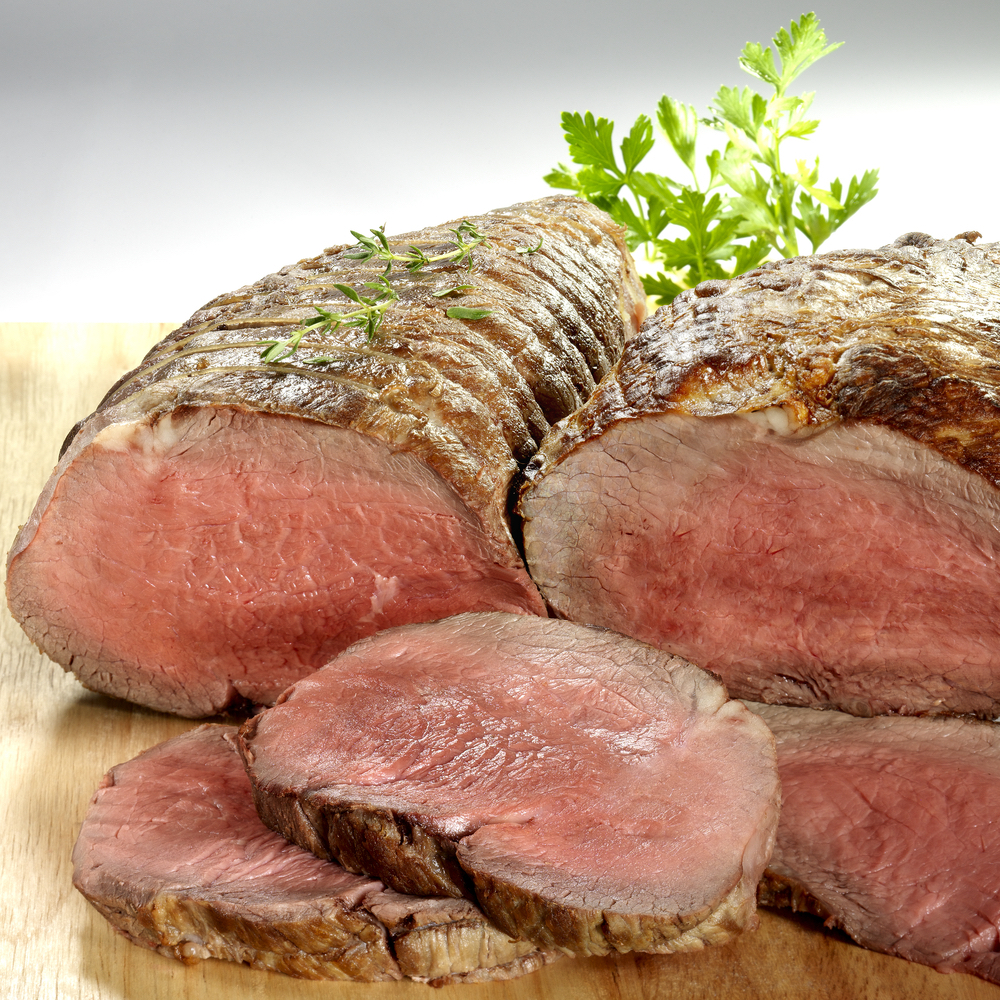Stages of Beef Production
Beef production begins with a cow-calf producer who maintains a breeding herd of cows that raise calves every year. When a calf is born, it weighs 60-100 pounds. Beef calves are weaned at six to 10 months-of-age when they weigh 450-700 pounds.
Calves leave their ranch or farm of origin between six and 12 months-of-age. Younger or lighter-weight calves may be sent to a backgrounder or stocker feeder who continues to graze them on grass or other forages until they are 12 to 16 months old. Both the cow-calf and stocker segments graze cattle on range and pastureland that is largely unsuitable for crop production. In fact, about 85 percent of U.S. grazing lands are unsuitable for producing crops, and grazing animals on this land more than doubles the area that can be used to produce food.
After the calves are weaned, some are sold at an auction market. Some animals may not be sold at an auction market, and instead will go directly from the cow-calf producer to the feedlot or from the backgrounder/stocker to the feedlot.
Most beef cattle spend approximately four to six months in a feedlot just prior to harvest where they are fed a grain-based diet. At the feedlot (also called feed yard), cattle are grouped into pens that provide space for socializing and exercise. They receive feed rations that are balanced by a professional nutritionist. Feedlots employ a consulting veterinarian, and employees monitor the cattle’s health and well-being daily. Feedlots are efficient and provide consistent, wholesome and affordable beef using fewer resources.
Once cattle reach market weight — typically 1,200-1,400 pounds and 18 to 22 months-of-age — they are sent to a processing facility to be harvested. U.S. Department of Agriculture (USDA) inspectors are stationed in all federally inspected packing plants and oversee the implementation of safety, quality and animal welfare standards from the time animals enter the plant until processed beef products are shipped.
Advancements in animal production practices mean that cattle can be raised much more effectively than in the past. Producers’ time-honored traditions of animal care and stewardship are ever-expanding to include the most recent scientific advancements that keep cattle healthy and the beef supply safe.

